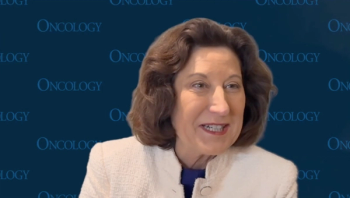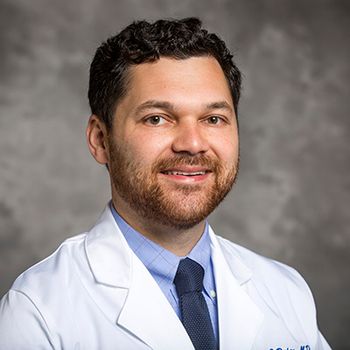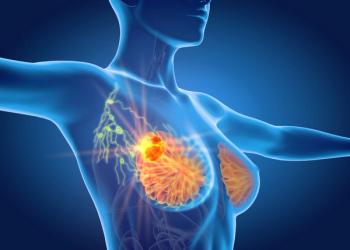
Oncology NEWS International
- Oncology NEWS International Vol 5 No 9
- Volume 5
- Issue 9
AgeAwareness Group Urges the Media to Keep Breast Cancer Issues on the Public Agenda
NEW YORK--Public discussion has played a large part in the recent declines in breast cancer mortality, say the sponsors of National Breast Cancer Awareness Month (NBCAM), and they urge the media to keep breast cancer on the public agenda.
NEW YORK--Public discussion has played a large part in the recentdeclines in breast cancer mortality, say the sponsors of NationalBreast Cancer Awareness Month (NBCAM), and they urge the mediato keep breast cancer on the public agenda.
At a press conference, the sponsors issued a statement that "despite10 years of progress in early detection, treatment, and survivalof breast cancer, the difficulty in reaching elderly and underservedwomen with important breast health messages remains a criticalconcern."
From 1989 to 1993, the most recent 5-year period for which dataare available, the age-adjusted breast cancer mortality rate fellapproximately 6% in white women overall and rose about 1% overallin black women. Dr. Smith noted that for some age groups of blackwomen, a decline in the death rate was observed for this period.Furthermore, although the overall mortality rate is still risingin black women, the rate of increase has declined dramaticallysince 1980.
Several speakers at the briefing said that the trend was the signthey had been waiting for that screenings, research, new treatments,patient advocacy, self-help groups, and media coverage over thepast decade had begun to pay off.
Larry Norton, MD, chief of the breast cancer medical service,Memorial Sloan-Kettering Cancer Center, said that when he heardthe news about the changes in the mortality rate, he felt likehis baseball team had won the pennant.
"It is important to get the message out that most peoplewho have early stage breast cancer are cured by modern treatmentmethods and that there has been an explosion of knowledge aboutbreast cancer, more than we ever dreamed of," Dr. Nortonsaid.
Increased participation in mammog-raphy screenings has playeda significant role in the modest mortality drop, said Robert Smith,PhD, senior director of detection and treatment for the AmericanCancer Society. "The rise in the numbers of women gettingmammograms underscores the profound positive impact that breastcancer awareness programs have had on the disease," he said.
He noted that from 1983 to 1993, the rate of women who had receivedat least one mammogram rose to 75%. In 1987, only 38% had hadat least one mammo-gram, according to American Cancer Societydata.
Dr. Smith pointed out that along with the drop in mortality, therehas been a corresponding decline in tumor size. "If you hadto pick a single prognostic factor, it's the size of the tumor,"he said.
The strides in reducing breast cancer mortality are "quiteconsistent with the increased numbers of women getting mammography,"he added. "Every single year since 1983, the average tumorsize has dropped, and we expect it to continue to drop in thefuture."
Public discussion has played a significant role in the progress,Dr. Norton said, adding that the United States is very differentfrom other nations in the open way in which breast cancer is discussed."In Europe nobody mentions breast cancer publicly,"he said. "Famous people die of it, and nobody knows whatthey died of, or maybe the words 'breast cancer' are mentionedat the last moment."
The topic was not discussed much in this country either untila decade or so ago, said Diane Blum, ACSW. Ms. Blum, executivedirector of Cancer Care, Inc., has been in the field of oncologysocial work for 20 years. The silence in the past, she suggested,fostered a sense of shame in women with breast cancer.
Ms. Blum described what happened to one of her clients who wasin a hotel fire in 1973. The woman got out safely, but insteadof fleeing immediately had spent precious minutes getting herprosthesis in place. "She was just too embarrassed to ventureout," Ms. Blum said.
Today the shame is being replaced by knowledge and action, shesaid. "Breast cancer has become a woman's health issue. Womenseek each other out for support and have fought for more researchdollars. As a result, there has been great progress in treatmentchoices."
But barriers still exist to getting the best treatment, Ms. Blumsaid, the same ones that prevent many women from getting mammograms--age,socioeconomic status, and location. "Those who are most vulnerableneed our attention so that they can experience the progress ofthe past 10 years," she said.
The NBCAM campaign which takes place every October, assists communitiesand employers to develop breast cancer awareness programs.
Toll-Free Breast Care Helplines
The Susan G. Komen Breast Cancer Foundation's national toll-freeBreast Care Helpline is staffed by trained, caring volunteerswho answer calls at 1-800-I'M-AWARE (1-800-462-9273), from 9 AMto 4:30 PM Central Standard Time, Monday through Friday.
The Cancer Care Counseling Line is staffed by professional oncologysocial workers. Patients may call 1-800-813-HOPE (4673), 9 AMto 5 PM Eastern Standard Time, Monday through Friday.
Articles in this issue
over 29 years ago
Multimodality Approaches Used in Esophageal Cancerover 29 years ago
Talking With Your Doctor About Cancer and Its Therapyover 29 years ago
Guttman Institute Reopens With Expanded Screening Servicesover 29 years ago
Weight Gain, Not Fat Intake, Increases Breast Cancer Riskover 29 years ago
Knowing When to Bow Out Gracefullyover 29 years ago
Chemo Appears Not To Raise Birth Defect Risk in Offspringover 29 years ago
Discovery of HIV-1 Protein Structure Could Lead to New Therapiesover 29 years ago
'Friends of Cancer Research' Will Lead New Public Education Campaignover 29 years ago
Cost of the New HIV Therapies Creates a Doctor's DilemmaNewsletter
Stay up to date on recent advances in the multidisciplinary approach to cancer.
















































































